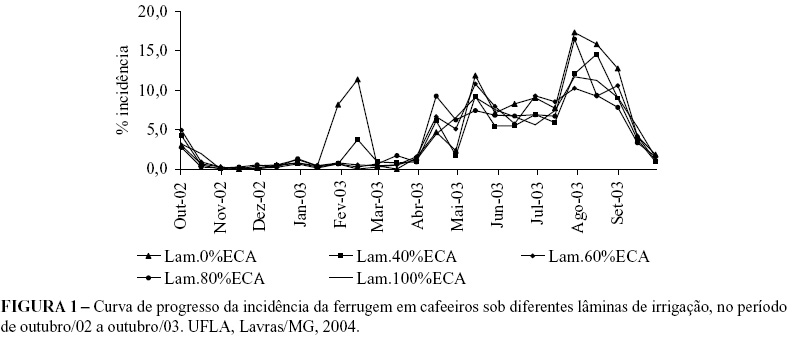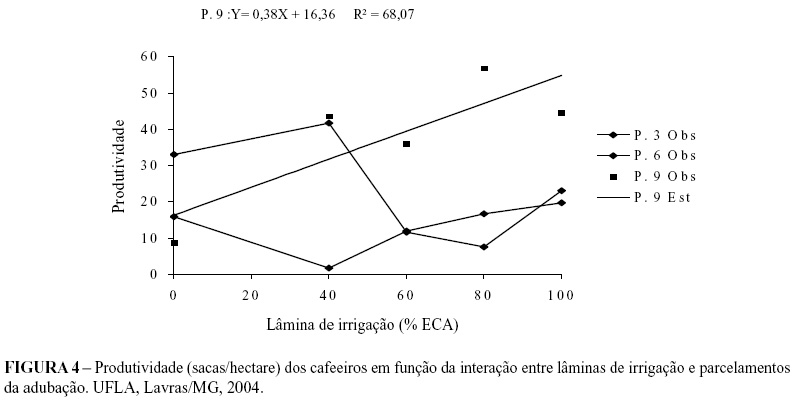The coffee planting today has been adopting new technologies to manage and manipulate the farming, such as irrigation and fertirrigation, in order to increase productivity and consequently the profits. This work aimed at evaluating the effects of different irrigation depths and fertilizer splitting by fertirrigation under a drip irrigation system on the progress of the rust and productivity in coffee trees. The research was set at the experimental area of The Federal University of Lavras (UFLA), with six-year-old coffee trees cultivar Acaiá Cerrado MG-1474, (Coffea arabica L.) with distance between lines of 0,6 x 3,0 m. The experimental design was developed in randomized blocks with four repetitions. The treatments were formed by five levels of plots representing irrigation depths corresponding to the values of 0%, 40%, 60%, 80% and 100% of evaporation of the Class "A" Tank (ECA), and three subplots of nitrogen and potassium fertilizer splitting in 3, 6 and 9. This work evaluated the incidence and severity rate of rust in leaves, percentage of leaf number increasing and coffee plants productivity. It was verified that the severity of the rust was influenced by the interaction between irrigation depths and fertilizer splitting. There was more severity of the rust in the fertilizer splitting in 3 and 9 using irrigation depths 0% and 60% ECA.
Hemileia vastatrix; Coffea arabica; Irrigation; Epidemiology







